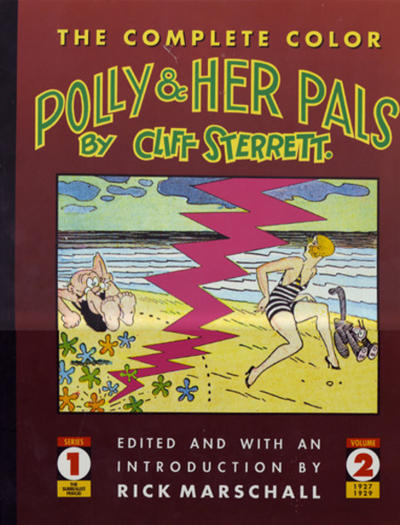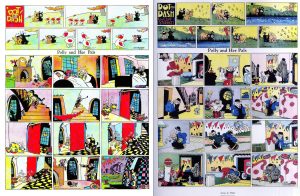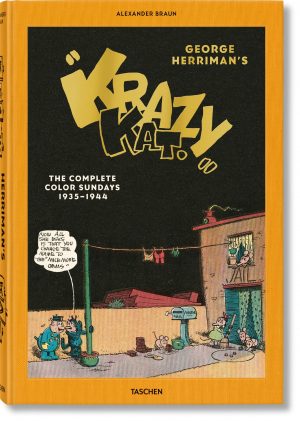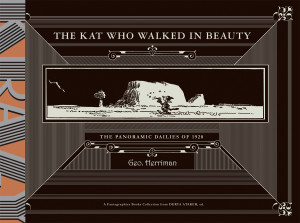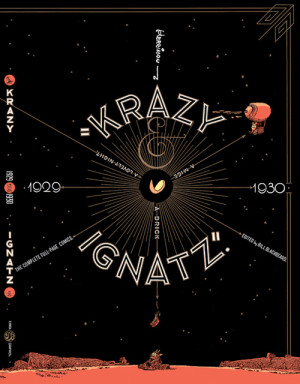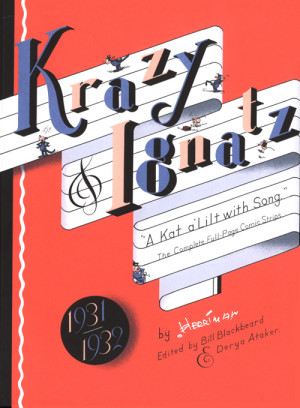Review by Frank Plowright
From the mid-1920s Cliff Sterrett imposed himself into the pantheon of newspaper strip greats, his Polly and Her Pals earning a place alongside George Herriman’s Krazy Kat and Winsor McCay’s Little Nemo in Slumberland. Echoes of both can be seen in his work. From Herriman there’s the artistic anarchy of the reader never knowing how the next page will look, and McCay’s brightness and sense of spectacle also informed Polly.
Volume 2 continues from July 1927, and we’re now arriving at Sterrett hitting a peak with his domestic slapstick. Whereas startling work was produced in 1926 and presented in Volume 1, it was seeded among the majority of pages featuring exquisitely well composed strips with innovative touches rather than leaps into new territory. Here so much of the work is visually astonishing. The two sample pages, one from October 1927 and the other from April 1928 display jaw-dropping visual surrealistic parts, yet both still supply a solid joke. They’re also wordless, a method Sterrett used frequently until May 1928, but then only twice again for the remainder of the collection.
It seems odd to dispense with such a powerful visual tool, but as compiler Rick Marschall noted in his introduction to the first volume, so little documentation exists about Sterrett’s career. Did he tire of the greater complexity or were conservative elements among the national readership were resistant to innovation? If it was compromise on Sterrett’s part, it didn’t stop the flourishing of visual absurdity and conceptual genius, except now restricted to individual panels instead of being the basis for an entire page. Characters become part of their armchair, clothing continues to startle, and the Perkins home is a repository of surrealistic fittings as if furnished by the wonky cast-offs from an art deco factory.
While bright colour was always an integral part of the Sunday pages, in this material it’s even more vibrant and noticeable. As it’s so bold and important to the general tone, it’s interesting to learn Sterrett didn’t colour his own strips, leaving it to versatile assistant Doc Winner. Again, as so few records exist it’s unknown if the colouring was under Sterrett’s direction or entirely Winner’s conception, but a quote Marschall sourced for his introduction indicates the latter. Winner was certainly experienced, and coloured other Sunday features as well as drawing his own strip.
Again, be warned of a few pages being of their era in portraying offensive racial caricatures, and be aware this book preceded the ability to digitally reconstruct strips only available in less than perfect form. Still, given Sterrett’s mastery, having any compilation is welcome.
This was planned as a four volume series reprinting all the colour pages to 1932, but no further volumes appeared. In 2010 the Library of American Comics series issued two volumes of Polly and Her Pals, incorporating every Sunday page from 1925 to 1930 with selections from earlier, and all meticulously restored in oversized format. It’s now the gold standard, but every fan of comic art should have Sterrett’s work in some form.
